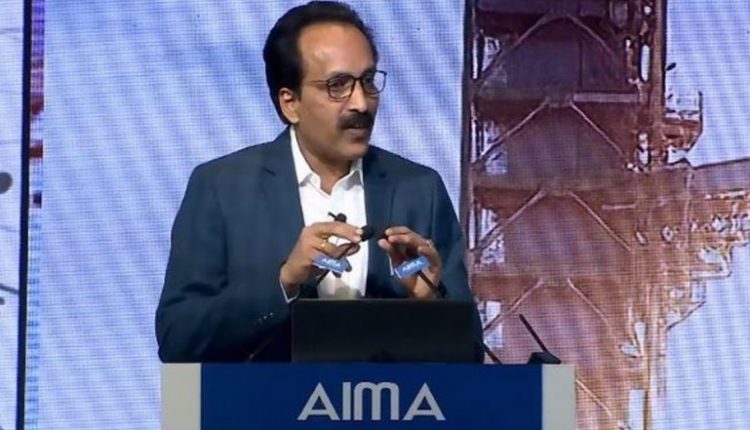New Delhi, September 27: ISRO Chairman S Somanath on Wednesday said he sees substantial potential in the Indian space during its ‘Amritkaal’, particularly in the application, services, and manufacturing domain. “When we reach our Amritkaal, the share of our economy in space will be substantially higher and it will come out in the secondary and tertiary sectors, and not by building rockets and satellites but by building applications, services, and manufacturing in India,” Somanath said addressing the 50th national management convention of All India Management Association (AIMA).
He cited examples such as hyperlocal weather update services, map services, remote sensing, and communication applications, among others which have tremendous use cases. “For this, we are creating the right ecosystem,” the ISRO chief added. S Somanath assumed the charge of Secretary, Department of Space and Chairman, Space Commission on January 14, 2022. Chandrayaan 3 Lands on Moon: Space Industry, Academicians Hail India’s Historic Soft-Landing on Moon’s South Pole.
By 2047, the Indian space economy is expected to be 1.8 per cent of its total GDP at USD 0.7 trillion. Emerging trends in the space sector include mining rare metals and minerals, space real estate, and made-in-space products. Stressing the need for an able talent pool, Somanath noted that ISRO is working with various institutions as part of its capacity-building program.
“We are working with various institutions for the talent pool. ISRO is only a builder of the system to generate science outcomes out of it. We need laboratories, universities, and institutions that have great scientists who will make sense of the data,” he asserted. “We continuously interact with institutions like IITs, IISERs, and research laboratories in this country to create a talent pool.” He added that ISRO also collaborates with most of the nations in the world and has 60+ MoUs with various nations.
Asked how ISRO makes cost-effective space technologies and solutions, he said it is in the organisation’s culture. “Cost control is in the culture of the organisation…the organisation itself does not allow you to exceed cost.” India’s Space Industry Expected to Grow From USD 8 Billion to USD 16 Billion in Coming Years, Says PM Narendra Modi.
Somanath said re-usage of hardware is another way how save cost. Further, on private participation in space, he said there are a huge amount of business opportunities opening up in the space sector private entrepreneurs can scale up their activities substantially. He said it would not be possible for the government to all the future space programs.
Meanwhile, the Vikram lander and the Pragyan rover of Chandrayaan-3, who went into “sleep mode” near the Moon’s South Pole after having completed their set tasks, were expected to awake on Friday (September 22). “Efforts have been made to establish communication with the Vikram lander and Pragyan rover to ascertain their wake-up condition. As of now, no signals have been received from them. Efforts to establish contact will continue,” ISRO had said as it failed to awaken the modules on September 22.
India took a giant leap as the Chandrayaan-3 lander module successfully landed on the moon’s South Pole on August 23, making it the first country to have achieved the historic feat and bringing to an end the disappointment over the crash landing of the Chandrayaan-2, four years ago. After having landed, the Vikram lander and the Pragyan rover performed different sets of tasks on the lunar surface for about 14 days, including finding the presence of sulphur and other minor elements, recording relative temperature, and listening to movements around it. One day on the Moon is equal to 14 days on Earth.
(This is an unedited and auto-generated story from Syndicated News feed, Today News 24 Staff may not have modified or edited the content body)


